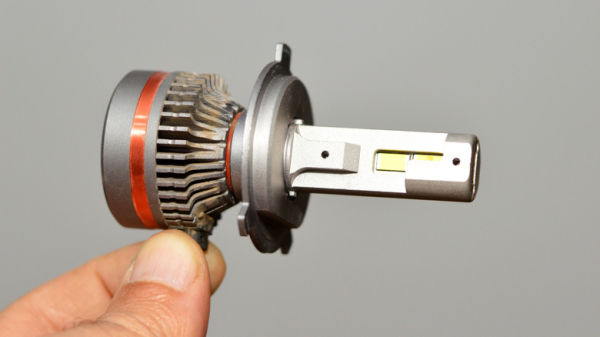There are several reasons why you’re better off sticking with the stock halogen or high-intensity discharge (HID) bulbs in your car, rather than replacing them with cheap aftermarket LED headlights. Most important is the legality of it all, since there are no provisions under the Federal Motor Vehicle Safety Standard (FMVSS) 108 of the U.S. Department of Transportation (DOT) that allow replacing stock halogen headlight bulbs with LED replacements. In short, retrofit LED headlight bulbs are not legal for street use on public roads in the United States. That’s a huge bummer, but there’s a light (pun intended) at the end of the tunnel: The DOT does not regulate fog lights or fog lamp bulbs, which means LED fog lamps are street legal depending on local or state laws.
We admit that, as car enthusiasts, upgrading halogen headlights to LED bulbs is quite tempting due to their many purported benefits. Since most halogen bulbs have a color temperature of 3,200 to 3,700 Kelvin (which produces a yellowish light), swapping to LED headlights that project a whiter, bluish light at around 6,000 Kelvin not only makes any old car look newer or “cooler,” but it also reduces eye strain while heightening alertness. Furthermore, LED bulbs produce more light while consuming less power, thereby lessening the strain on your car’s electrical system, even during extended nighttime drives.
Incompatibility with halogen housings
The biggest misconception about aftermarket LED headlight bulbs from Amazon or other online stores is that they’re compatible with any headlight housing. In truth, they’re not, since the reflectors in halogen headlight housings are unsuited for the light output of a typical LED bulb. Manufacturers design the reflector housings of halogen headlights to shape and angle the light down the road, maximizing visibility without dazzling the driver in the opposite lane. Since most LED bulbs don’t emit light in the same manner as halogen bulbs, inserting them into a headlight housing designed for halogens or incandescent bulbs may result in dark spots, scattered light output, diminished visibility, or blinding oncoming traffic.
In most cases, it may seem the headlights are brighter after swapping when viewed head-on from the outside. However, sitting in the driver’s seat will reveal the opposite. There’s no doubt about the brightness of LEDs, but how that brightness translates on the road is a different matter. It also doesn’t have to do with the shape or size of the LED bulbs, too, since the orientation and luminance distribution are also critical for it to emit light more efficiently. Moreover, the incompatibility will affect the beam pattern of your car’s headlights, which means it could emit insufficient light in the places of the road that matter.
However, it’s not all bad news, as the inconsistencies won’t occur if your car has projector headlights. Projectors feature a different construction than reflectorized headlights, and they typically include an elliptical reflector, a condenser lens, and a shutter to direct more light down the road. Despite this, it’s always better to consult your car’s owner’s manual before attempting to replace or upgrade headlight bulbs.









